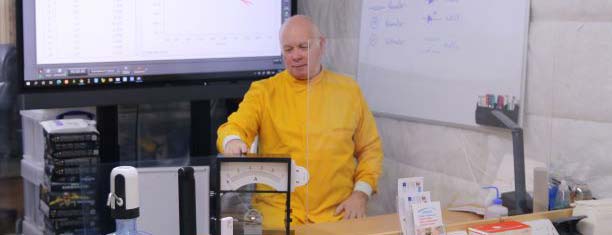Friday 3 March 2023
Demonstrating Longitudinal and Transverse waves on a slinky
Capturing images or video of a slinky on a phone camera while demonstrating longitudinal and transverse waves provides a great opportunity to see the physical phenomena in action. #LongitudinalWaves #TransverseWaves #SlinkyExperiment #ScienceEducation #VisualLearning
Thursday 2 March 2023
Magnetic Stirrer
According to the students, the magnetic stirrer is considered the most effective piece of chemistry equipment.
Wednesday 1 March 2023
Normal Distributions
Normal distributions and inverse normal distributions can be tricky concepts for students. Knowing when to use each one and determining which one the question is referencing can be challenging. Using the Casio CG-50 with distribution helps. We're working hard to master it in class! #Maths #NormalDistribution #Education
Tuesday 28 February 2023
Crushing bottles
Following crushing some cans with a vacuum, the students were curious to observe the process in action again. Therefore, we crushed an empty fizzy drinks bottle and measured the pressure with the @Pascoscientific pressure sensor. The pressure dropped inside the bottle to almost zero Pascals ( the unit of pressure measurement). A vacuum pump or hand-held vacuum device can be used to remove air from a bottle. The bottle is connected to the vacuum pump or device with a tube, and the air is then pumped out of the bottle, creating a low-pressure environment. As a result, the air pressure inside the bottle decreases, which can cause the bottle to collapse or deform if it is not strong enough to withstand the external air pressure. This process can be used for various purposes, such as preserving food or creating a vacuum-sealed environment for experiments.
Monday 27 February 2023
Food Tests
During the investigation, the students were surprised by the speed at which starch was converted into sugar by amylase. Recordings taken every 10 seconds showed that the starch had nearly disappeared within a minute.
The test for reducing sugars, such as glucose and fructose, involves mixing the sample with Benedict's reagent and heating it in a water bath. If reducing sugars are present, the solution will change from blue to green, yellow, orange, or red, depending on the amount of reducing sugar present. The greater the amount of reducing sugar, the more intense the colour change.
Sunday 26 February 2023
Assembly Language and Turing Tumbles
We generated the Fibonacci sequence using Assembly Language using the Little Man Computer and subsequently replicated the process using Turing Tumbles. By examining the methods used, we identified both similarities and differences between the two approaches.
Saturday 25 February 2023
Test for Hydrogen
When a small amount of magnesium ribbon is added to hydrochloric acid, it produces a significant amount of hydrogen gas in the test tube. When the test tube is turned horizontally and a flame is brought near its mouth, the resulting sound is the characteristic "squeaky pop" of hydrogen gas combustion.
A level Math
Students working out just what formulae are and are not in the exam sheet. Then, the panic can begin to memorise the formulae that are not...

-
Negative feedback is a difficult concept to try and get over so I tried using a balance board and the @pascoscientific smart cart strapped...
-
Getting a classic set of results for the titration of NaOH and HCl is not that difficult but it is nice when we can get students to this ...
-
Mechanics: the grand meeting of Maths & Physics! Using strobe light & a ball drop for gravity-acceleration calculations and SUVAT fo...














